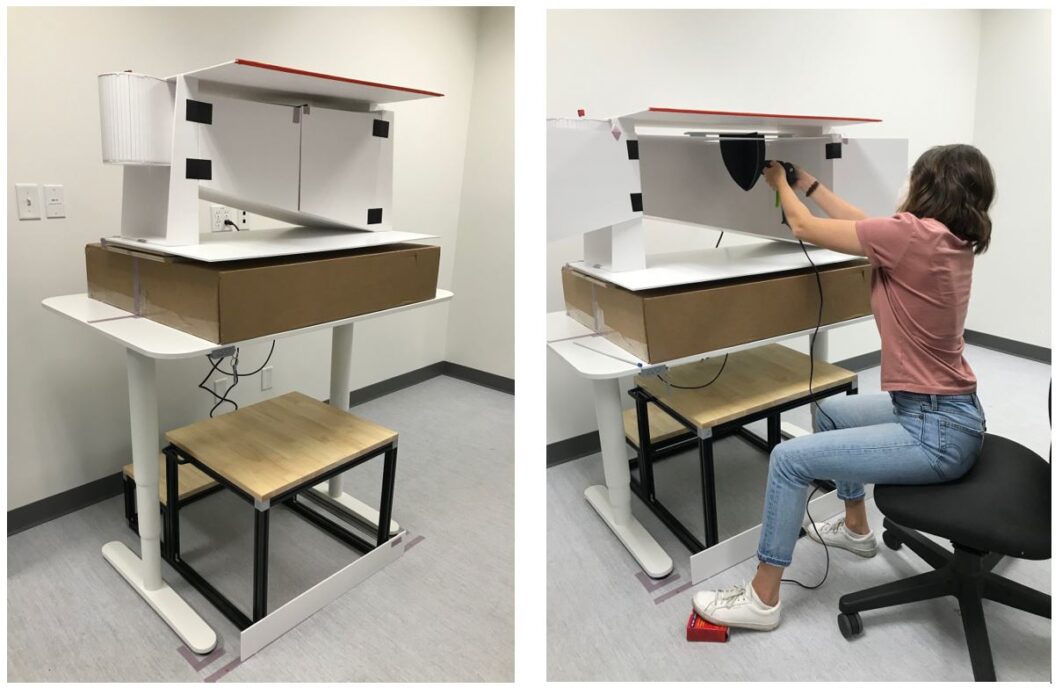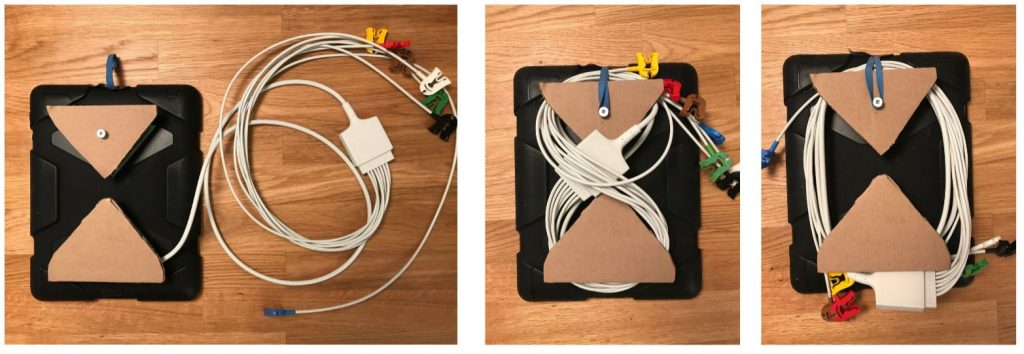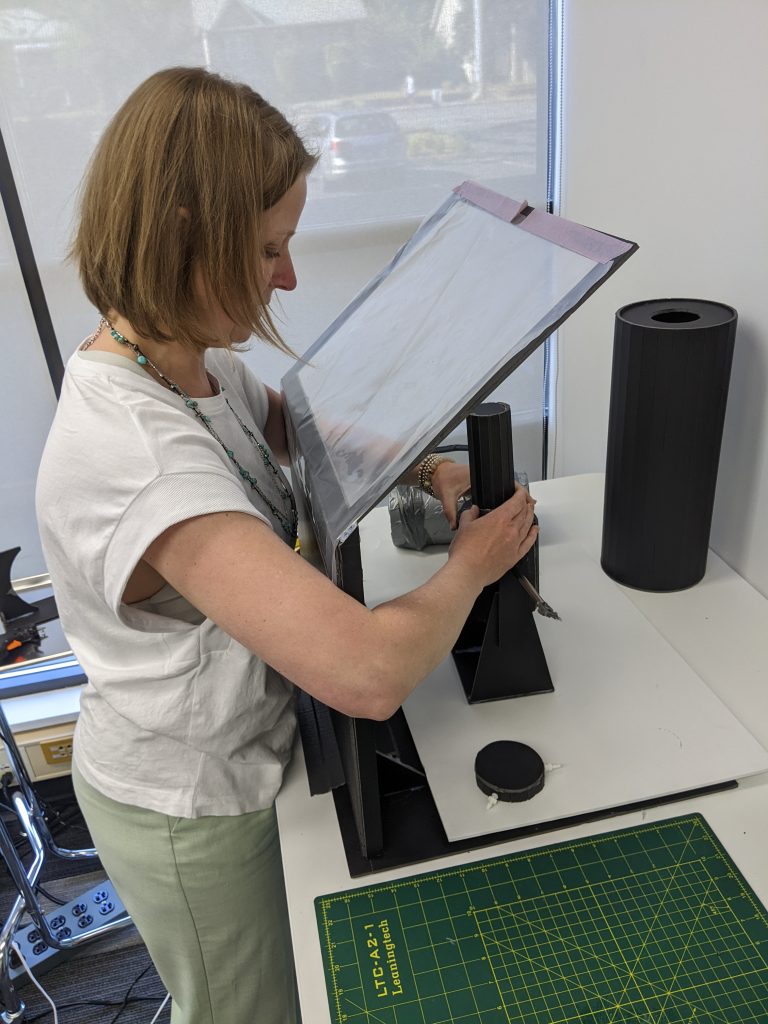
Cardboard Mock-Ups Vs. 3D Printing for Rapid Iterations
When I joined StarFish Medical I was pretty stoked about the 3D printer and marvelled at the prints created by the Mechanical Engineers and Industrial Designers. As a Human Factors Engineer in product development my favorite challenges are the ones that call on imaginative solutions for investigating and testing use-related ideas and concepts for new products.
I was excited to create my own 3D printed rapid prototypes for human factors testing. But as the months went by and I started planning work sessions and usability tests, opportunities to utilize the 3D printer never seemed to materialize. Over time I found myself going back to what’s always worked best for me: foam core and cardboard mock-ups!
Cardboard Vs. 3D Rapid Prototyping
There are many reasons why these low-fidelity mock-ups have turned out to be more suitable than 3D prints or high-fidelity models for human factors evaluations in the early design stages. Two obvious reasons are availability and cost of the materials. Any art store, Walmart or dollar store will have the four basic supplies I need for foam core and cardboard mock-ups: foam core/cardboard boards, hot glue gun, metal ruler and an X-Acto knife.

To use the printer, I would have to spend time building a CAD model of the mock-up, learning new software and how to operate the printer, including the occasional cleaning and troubleshooting. In our organization the printer is in high demand. Considering that each part can take several hours to print, rapid prototyping isn’t always as rapid as needed.
The printer is also limited in the size of parts it can print. So many times, the large devices or interfaces that I want to test would require dozens of prints that needed to be glued together afterward.
But the primary reason I keep turning to cardboard and foam core for mock-ups is because of the user experience it offers me. When I’m wanting to create a workflow experience for a user, I’m creating a 3D experience in a 3D space. I need to be in that space as I’m bringing all the elements together. I need to carve out volumes and feel them with my hands so I can model the user experience that will bring test participants into the right mindset.
Using 3D software to explore volumes, shapes and proportions has never provided me with that sensory experience.
I find rapid mock-ups best suited for applications where we are unclear about the device workflow and want low-fidelity props to support investigation and design activities with future users.
For example, when presented with a cardboard medical cart, participants will comment on the clearance for their feet, the size and position of the handles or the height of a shelf. They can do all this while standing around the mock-up.
There is natural tendency for people to start acting out how they would use the equipment as they imagine what it would be like in their real work setting. Observing the users in this way provides great insight into their wants and needs and allows us to identify user requirements that don’t come up during the interview process.
The cardboard mock-ups are also well suited for ergonomic evaluations. On a recent project we were designing a gantry and had to determine whether the height and opening to access a specific area would allow maintenance personnel to work comfortably with a set of tools. It took about 2 hours to create the foam-core mock-up and less than an hour to perform the evaluation.

Another advantage of low fidelity models is that their unfinished look and feel keeps the users focused on evaluating the usability rather than aesthetic qualities. When users are presented with nicely finished prototypes they may focus on the colours or the shape of buttons rather than the purpose of the design.
They may also feel like a polished prototype is a final product with little room left for improvements. On the other hand, a foam core model will communicate that we are in the early stages of design and gives the perception that the device is still a work in process. As a result, users are generally more apt to suggest big changes they would like to see.
I’ve often been in situations where we relied on drawings and elegant renderings to make decisions in order to move forward quickly with developing a product. The first time we get to interact with an embodiment of the device is when the first prototype is built (at considerable expense). This is usually many months into the project after the client has agreed to what they saw on the renderings.
Cardboard Vs. 3D Rapid Prototyping Bottomline:
Inevitable we come to realize that some aspects of the product fall short of our assumptions because the real size of the device doesn’t present itself as we had imagined. Only after this could we start to rethink the design and really explore the form and function.
In doing this we discover opportunities we wish we had thought of sooner. And that is the entire spirit of ideating physically in true scale early in the design process. may be worth it at the sacrifice of cost later. Learn more about prototyping medical devices on a budget.
For more insights into prototyping, read our other blogs on Compare 3D printing prototyping merits for three common processes, Prototyping and Its Relationship to Innovation in Medical Device Design, and How to turn patient imaging data into functional 3D models.
Nadia Routhier is a Human Factors Engineer at StarFish Medical. She did her undergraduate studies in Industrial Design at University of Montreal and completed a Master’s in Human Factors at Polytechnique Montréal.
Images: StarFish Medical
Discover Startup & Founder Benefits of Working With StarFish
